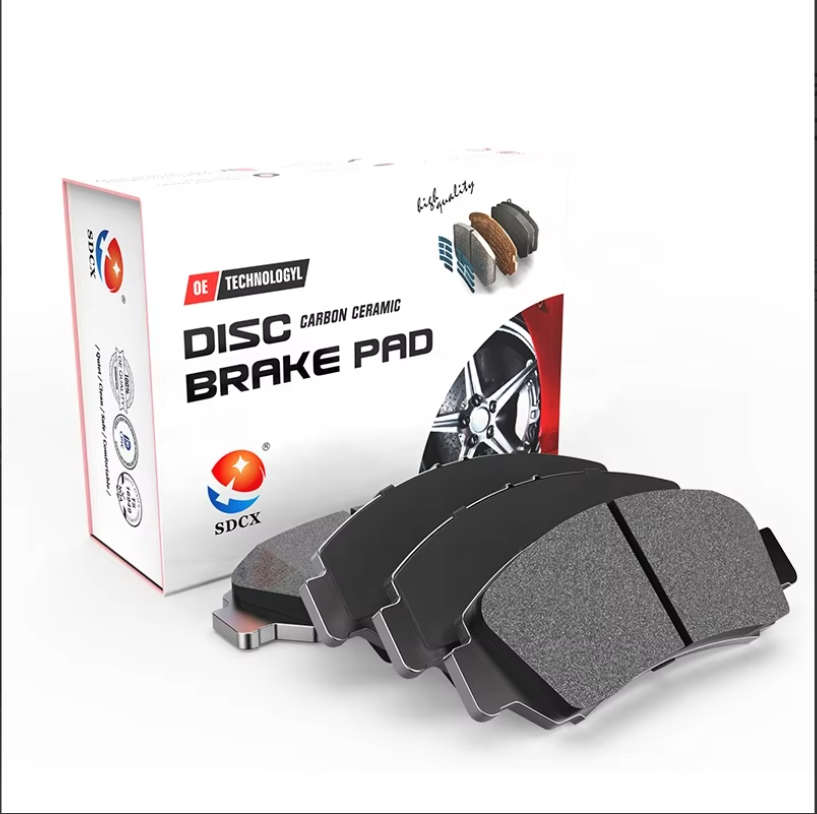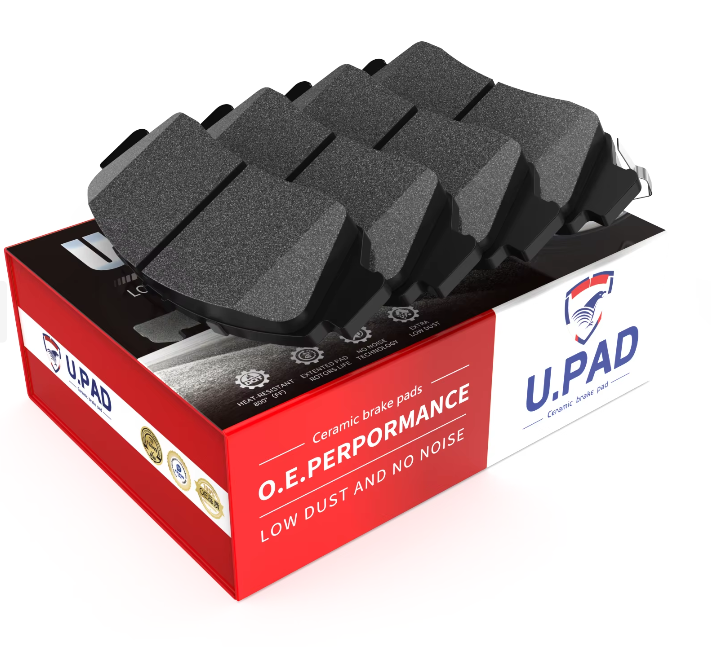Signes Essentiels de l'Usure des Plaquettes de Frein et Indicateurs de Remplacement
Les plaquettes de frein de votre véhicule jouent un rôle crucial dans la garantie de votre sécurité sur la route. Lorsque plaquettes de Frein doivent être remplacées, ignorer les signaux d'alerte peut entraîner des réparations coûteuses et des conditions de conduite dangereuses. Comprendre ces indicateurs essentiels vous aidera à entretenir le système de freinage de votre véhicule et à éviter les dangers potentiels.
Les véhicules modernes sont équipés de systèmes de freinage sophistiqués, mais même les technologies les plus avancées nécessitent un entretien régulier et des remplacements opportuns. Savoir reconnaître le moment où les plaquettes de frein doivent être remplacées constitue un aspect fondamental d'une conduite responsable. Examinons les signes révélateurs indiquant qu'il est temps d'installer de nouvelles plaquettes de frein et comprenons l'importance d'une intervention rapide.
Compréhension des composants des plaquettes de frein et des motifs d'usure
L'anatomie des plaquettes de frein
Les plaquettes de frein sont composées d'une plaque métallique sur laquelle est fixé un matériau de friction appliqué contre le disque de frein. Ce matériau de friction s'use progressivement avec l'utilisation normale, c'est pourquoi les plaquettes de frein doivent être remplacées périodiquement. La composition du matériau de friction peut varier : elle peut être organique, métallique ou céramique, chacune offrant des caractéristiques de performance et une durée de vie différentes.
La plupart des plaquettes de frein modernes intègrent des indicateurs d'usure conçus pour alerter les conducteurs lorsque le remplacement s'avère nécessaire. Ces indicateurs peuvent être des capteurs électroniques ou des languettes métalliques simples qui produisent un avertissement sonore lorsque l'épaisseur du matériau de la plaquette atteint un niveau critique.
Usure normale vs. détérioration anormale
L'usure normale des plaquettes de frein se produit progressivement et de manière uniforme sur toute la surface de la plaquette. Toutefois, divers facteurs peuvent accélérer cette usure ou provoquer des motifs irréguliers. Une conduite agressive, des conditions de trafic stop-and-go fréquentes et le transport de charges lourdes peuvent toutes affecter la rapidité avec laquelle les plaquettes de frein doivent être remplacées. Comprendre la différence entre l'usure normale et anormale permet d'identifier précocement d'éventuels problèmes.
Des motifs d'usure anormaux peuvent indiquer des problèmes sous-jacents liés au système de freinage de votre véhicule, tels qu'étriers coincés ou surfaces de disques irrégulières. Ces situations nécessitent une attention immédiate afin d'éviter des dommages supplémentaires et garantir des performances de freinage optimales.

Signaux visuels et sonores d'alerte
Interprétation des bruits de frein
L'un des indicateurs les plus évidents indiquant que les plaquettes de frein doivent être remplacées est l'émission de bruits inhabituels lors du freinage. Un sifflement aigu ou un bruit de crissement provient souvent du contact entre l'indicateur d'usure et le rotor. Ce système d'avertissement intégré est conçu pour alerter les conducteurs avant que le matériau des plaquettes soit complètement usé.
Les bruits de grincement sont plus sérieux et indiquent généralement que les plaquettes de frein sont entièrement usées, entraînant un contact métal contre métal. Cette situation exige une intervention immédiate afin d'éviter des dommages importants au rotor et aux autres composants du système de freinage.
Techniques d'inspection visuelle
Des inspections visuelles régulières peuvent aider à déterminer quand les plaquettes de frein doivent être remplacées, avant que des bruits d'avertissement ne se manifestent. De nombreux véhicules permettent de vérifier l'épaisseur des plaquettes de frein à travers les rayons de la roue. Le matériau des plaquettes devrait avoir une épaisseur d'au moins 1/4 pouce. Moins que cela indique qu'un remplacement sera bientôt nécessaire.
Vérifiez l'usure irrégulière, les fissures ou le vitrage sur la surface des plaquettes. Ces conditions peuvent nuire à l'efficacité du freinage et indiquer un besoin de remplacement immédiat, même si l'épaisseur des plaquettes semble suffisante.
Signes avant-coureurs liés aux performances
Changements dans la réponse de la pédale de frein
Lorsque les plaquettes de frein doivent être remplacées, vous pouvez remarquer des changements dans la sensation de la pédale de frein. Une pédale molle ou élastique pourrait indiquer des plaquettes usées ou d'autres problèmes liés au système de freinage. De même, si la pédale nécessite plus de pression que d'habitude pour arrêter le véhicule, cela pourrait signifier que vos plaquettes de frein sont trop usées.
Certains véhicules peuvent ressentir une vibration ou un pulsation au niveau de la pédale lors de l'application des freins. Bien que cela puisse être lié à des disques déformés, cela peut également indiquer une usure irrégulière des plaquettes de frein ou une contamination de la surface des plaquettes.
Comportement du véhicule pendant le freinage
Faites attention à la façon dont votre véhicule réagit lors du freinage. Si la voiture dévie d'un côté pendant le freinage, cela peut signifier que les plaquettes de frein doivent être remplacées d'un côté. Une usure inégale des plaquettes peut provoquer ce comportement et doit être corrigée rapidement afin de maintenir des performances de freinage sûres.
Une distance de freinage accrue est un autre indicateur critique. Si votre véhicule met plus de temps que d'habitude pour s'arrêter, des plaquettes de frein usées pourraient en être la cause. Cette situation est particulièrement dangereuse lors de freinages d'urgence et doit être traitée immédiatement.
Stratégies d'entretien et de prévention
Calendrier d'inspection régulière
Établir un calendrier régulier d'entretien permet d'identifier le moment où les plaquettes de frein doivent être remplacées avant qu'elles ne soient excessivement usées. La plupart des constructeurs recommandent d'inspecter les plaquettes de frein tous les 19 000 kilomètres (12 000 miles) ou annuellement, selon l'échéance la plus proche. Toutefois, les conditions et habitudes de conduite peuvent nécessiter des inspections plus fréquentes.
Les inspections professionnelles devraient inclure la mesure de l'épaisseur des plaquettes, la vérification des motifs d'usure uniformes et l'évaluation des autres composants du système de freinage. Cette approche complète permet d'éviter les pannes de freins inattendues et de maintenir une sécurité optimale du véhicule.
Habitudes de conduite prolongeant la durée de vie des plaquettes de frein
Adopter certaines habitudes de conduite peut considérablement prolonger la durée de vie de vos plaquettes de frein. Éviter le rapprochement excessif (tailgating) permet un freinage plus doux, tandis qu'anticiper les arrêts réduit le besoin de freiner brusquement. Ces pratiques non seulement aident à déterminer quand les plaquettes de frein doivent être remplacées, mais prolongent également leur durée de service.
En outre, réduire le poids du véhicule et éviter une conduite agressive peuvent avoir un impact significatif sur la longévité des plaquettes de frein. L'entretien régulier des autres composants de la suspension permet également une usure uniforme des plaquettes et des performances optimales.
Questions fréquemment posées
Quelle est la durée de vie typique des plaquettes de frein ?
Plaquette de frein la durée de vie varie considérablement en fonction des conditions de conduite, des habitudes de conduite et de la qualité des plaquettes. Généralement, les plaquettes de frein doivent être remplacées tous les 30 000 à 70 000 kilomètres. Toutefois, certains conducteurs peuvent avoir besoin d'un remplacement dès 20 000 kilomètres, tandis que d'autres peuvent parcourir jusqu'à 80 000 kilomètres avec un même jeu de plaquettes.
Dois-je remplacer toutes les plaquettes de frein en même temps ?
Oui, il est recommandé de remplacer les plaquettes de frein par paires (les deux à l'avant ou les deux à l'arrière) afin d'assurer une performance de freinage uniforme. Cette pratique permet de maintenir la stabilité du véhicule et d'éviter une usure irrégulière qui pourrait affecter la tenue de route.
Que se passe-t-il si je retarde le remplacement des plaquettes de frein ?
Reporter le remplacement des plaquettes de frein lorsqu'elles sont usées peut entraîner des dommages aux disques, une efficacité de freinage réduite et des coûts de réparation nettement plus élevés. Plus important encore, cela compromet la sécurité du véhicule et met le conducteur ainsi que les autres usagers de la route en danger.
Puis-je remplacer les plaquettes de frein moi-même ?
Bien qu'il soit possible de remplacer les plaquettes de frein soi-même, cela nécessite des outils adaptés, des connaissances techniques et des précautions de sécurité. Étant donné l'importance vitale du système de freinage, de nombreux propriétaires de véhicules préfèrent faire appel à un professionnel pour l'installation, afin de garantir un fonctionnement correct et la sécurité.
Table des Matières
- Signes Essentiels de l'Usure des Plaquettes de Frein et Indicateurs de Remplacement
- Compréhension des composants des plaquettes de frein et des motifs d'usure
- Signaux visuels et sonores d'alerte
- Signes avant-coureurs liés aux performances
- Stratégies d'entretien et de prévention
- Questions fréquemment posées

